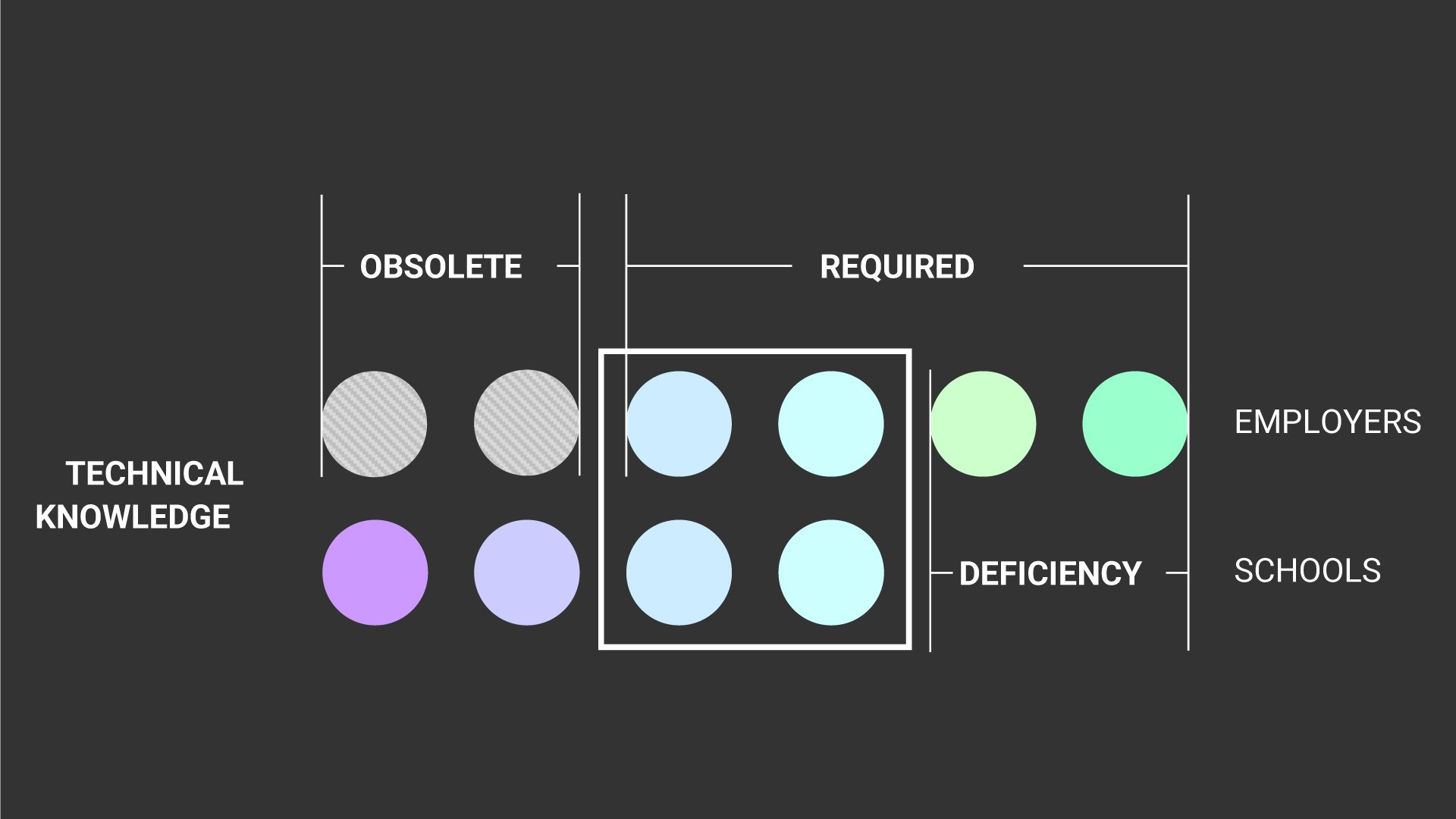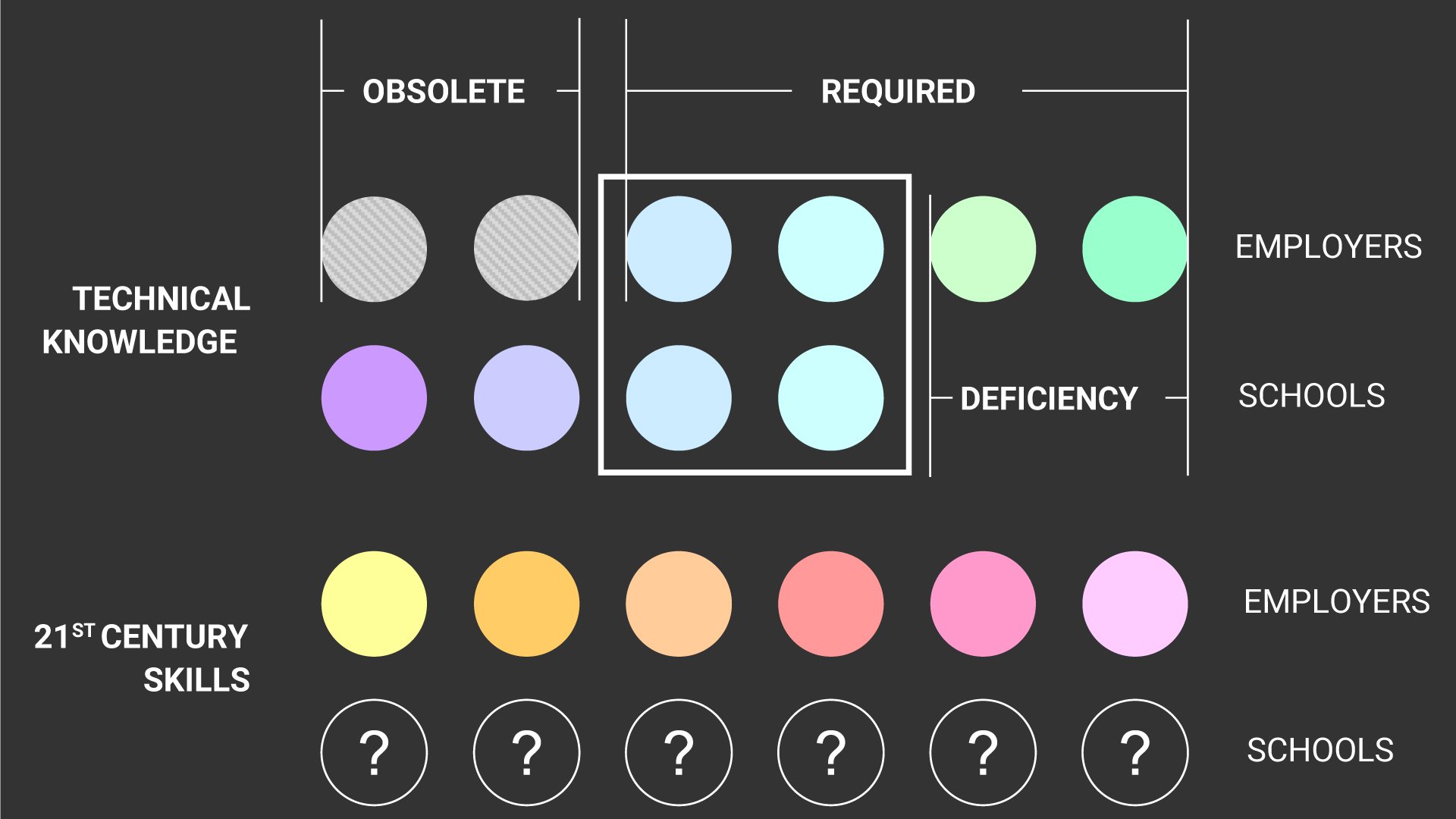To meet changing demands, employers seek graduates with 21ˢᵗ century skills. What must schools do to better equip their students for the workforce?
Half of what graduates learn in school gets obsolete by the time they graduate.1 This makes looking for a job more challenging. According to the 2016 Future of Jobs Report published by the World Economic Forum (WEF), the main reason for this is how quickly technological advancements alter what companies require of their employees. The rapid changes in technology and how they disrupt or are adopted across different industries are outpacing the rate in which technical knowledge is transferred in schools.
Take software engineering as an example. At university, students can master a particular way of building and testing programs; by the time they graduate, there is a good chance that the entire process they trained for would have already been automated. This renders this particular skillset obsolete, and thus creating a deficiency. Whatever knowledge they acquired during their years of formal education may no longer match the domain knowledge currently sought out by the industry they’re trying to get into. This trend is further exasperated by the pandemic, which has forced enterprises to fast-track their automation efforts and trim their headcount.


In their 2020 report, the WEF predicts that by 2025, 6% of the global workforce will be displaced.2 Algorithms and machines will take over administrative tasks, some forms of manual labor, and data processing. The jobs that will more likely remain stable are those that heavily involve skills such as communication, decision-making, and management, among others. These inimitable soft skills are what educators call the 21stcentury skills.
Times Higher Education, which annually publishes their renowned global university rankings, also noted a shift in employer attitudes with regard to what they think the role of educational institutions should be.3 Based on a recent survey involving 9,000 recruiters, they cited that more and more companies now expect universities to veer away from focusing too much on imparting theory and instead channel their efforts to produce graduates who are better equipped for the workplace.
These trends highlight a pressing issue that educational institutions have to deal with: the 21st century skills gap. With the way technology and automation continuously debunk or advance theories and change processes, schools will have to find ways to impart skills that their graduates can actually use for the long haul. Although transferring domain knowledge relevant to their graduates’ professions is extremely important, it’s also essential to balance this by allowing students to acquire more permanent soft skills. The prevailing question now is: Are schools pragmatically creating opportunities for their students to develop 21st century skills?
Explaining the 21ˢᵗ century skills gap
Explaining the 21ˢᵗ century skills gap
Going back to the 2020 Future of Jobs Report, a number of companies expressed that although they do not necessarily require an “exact skills match” from their employees, they still gauge possible long-term employee productivity based on key competencies, among which are the following 21st century skills: critical thinking and analysis, problem solving, flexibility, resilience, and stress tolerance. Interestingly, they rank active learning as the second most sought-after skill by 2025, just behind analytical thinking.
Active learning, in the pedagogical sense, is a teaching mode that grants students more freedom to explore the concepts they learned in class. Teachers act as facilitators and co-learners who collaborate with their students to generate new ideas. But more than just a mode of instruction, active learning can also be acquired as a behavior through constant practice of active learning activities in classes. As a 21st century skill, employees can use active learning to deliberately find opportunities to gain more knowledge and insights through study and application.
So how must schools and educators adjust their pedagogies to facilitate active learning sessions and instill active learning as a skill?

BenQ has partnered with academic and professional services staff based at University College London and Oxford University to create a comprehensive handbook, Active Learning in the 21st Century Classroom, which details how schools can utilize technology to apply active learning methods in their curricula. Download the handbook to learn more.
References
- Schwab, K and Samans, R., ‘Skills Stability’, The Future of Jobs Report 2016, World Economic Forum, http://reports.weforum.org/future-of-jobs-2016/skills-stability/, January 2016, last accessed 1 December 2020.
- Schwab, K, ‘Skills Stability’, The Future of Jobs Report 2020, World Economic Forum, http://www3.weforum.org/docs/WEF_Future_of_Jobs_2020.pdf, October 2020, last accessed 1 December 2020.
- Baker, S., ‘Firms shift towards wanting ‘work-ready’ graduates’, Times Higher Education Magazine, https://www.timeshighereducation.com/news/firms-shift-towards-wanting-work-ready-graduates, 19 November 2020, last accessed 1 December 2020







